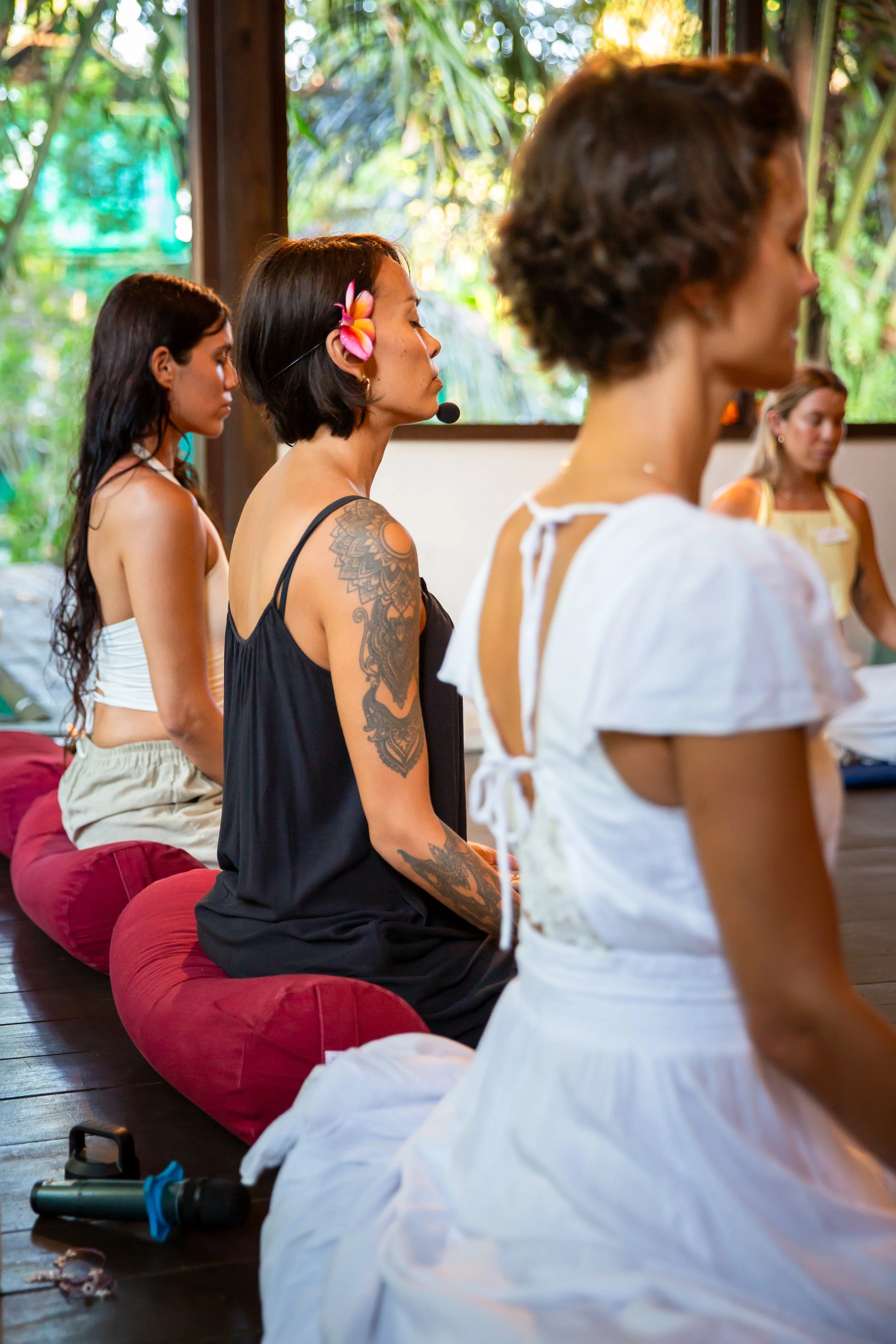The Four Paths to Moksha: Finding Your Route to Freedom
A 6-minute guide to discovering which ancient pathway will set you free
The Problem Most Yogis Never Talk About
You've been practicing yoga for months , maybe years. You show up to class, you breathe, you stretch , you feel good... for about an hour.
Then you walk back into your life and nothing has fundamentally changed.
You're still anxious about your career. Still triggered by your family. Still feeling like something is missing, like you're living someone else's life instead of your own.
Here's what many yoga teachers don't often mention: The poses were never meant to be the destination.
They were just the preparation for something much deeper—something the ancient yogis called moksha: complete liberation from everything that keeps you trapped in cycles of suffering.
The Four Ancient Pathways
Our Mandala logo representing four paths leading to the central point of liberation.
2, 000 years ago, when life was arguably harder than today, the yogis mapped out four distinct pathways to freedom. Not rigid rules, but time-tested approaches that have guided seekers for millennia, each suited to different temperaments and life circumstances.
Think of them as different hiking trails up the same mountain. The summit is the same— total liberation—but the journey looks completely different.
Path 1: Karma Yoga (The Path of Action)
Best for: People who can't sit still, natural helpers, those who feel guilty being "selfish"
You find freedom by serving others so completely that your ego dissolves. Every action becomes sacred when done without attachment to results.
Real example: A corporate lawyer who volunteers at refugee camps discovers that helping others helps her forget her own problems. Eventually, she realizes her "problems" were mostly self-created drama.
Path 2: Bhakti Yoga (The Path of Devotion)
YTT students chanting together during the Kirtan session.
Best for: Emotional people, those who love music/art, anyone who's ever been "in love"
You channel your natural capacity for love toward something greater than romantic relationships or material success. Your heart becomes so full there's no room for fear.
Real example: A woman going through a difficult breakup starts chanting every morning. Six months later, she's not bitter anymore—she's grateful for the experience that broke her open to unconditional love.
Path 3: Raja Yoga (The Path of Meditation)
Best for: Mental people, overthinkers, those addicted to achievement
Through systematic meditation practice, you learn to observe your thoughts without being controlled by them. You discover the space between thoughts where true peace lives. ¹
Real example: A tech CEO with chronic anxiety discovers that 20 minutes of daily meditation does more for his performance than any productivity hack he's ever tried.
Path 4: Jnana Yoga (The Path of Knowledge)
Best for: Questioners, philosophers, people who need to understand "why"
You use spiritual study and self-inquiry to dissolve the illusion of separation. Through contemplating sacred texts and questioning the nature of reality, you discover your true identity beyond roles and stories.¹
Real example: A spiritual teacher realizes through years of studying Vedantic texts that all her seeking was keeping her from what she already was. The searcher disappears, and what remains is what she was always looking for.
Which Path Is Calling You?
Take this 30-second assessment:
When you're stressed, do you naturally want to (a) do something (b) pray (c) get quiet and breathe (d) try to learn more about the situation?
What draws you most: (a) making a difference (b) transcendent experiences (c) inner peace (d) understanding truth?
Your biggest struggle is: (a) feeling selfish when you focus on yourself (b) emotional ups and downs (c) mental chatter and anxiety (d) feeling disconnected from meaning?
Mostly A's: Karma Yoga is your path
Mostly B's: Bhakti Yoga will set you free
Mostly C's: Raja Yoga is calling you
Mostly D's: Jnana Yoga is your route.
The Truth About Liberation
A moment of stillness during the YTT opening ceremony.
Here's what most people get wrong: They think moksha is some far-off spiritual achievement requiring years of caves and celibacy.
Not necessarily.
Liberation can be cultivated right now, in your current life, through whichever path resonates most deeply with your nature.
The moment you stop fighting your personality and start using it as your spiritual practice, everything changes.
The chronic overthinker discovers profound peace through meditation. The natural giver learns to channel their love toward something infinite. The eternal seeker finds what they've been searching for through inquiry. The devoted lover transforms service into sacred practice.
Your Next Step
You don't need to choose one path forever. You don't need a guru. You don't need to move to India.
You just need to start where you are, with what calls to you most naturally.
This week: Pick the path that resonated most strongly and commit to exploring it for just 10 minutes a day.
Karma Yoga: Volunteer somewhere or help a stranger without telling anyone.
Bhakti Yoga: Listen to devotional music or spend time in nature with gratitude.
Raja Yoga: Practice breath-focused meditation—watching the breath without controlling it.
Jnana Yoga: Study a spiritual text or practice self-inquiry by asking "Who am I beyond my thoughts, emotions, and roles?"
Freedom isn't a destination. It's a way of walking through life.
And the path that feels most natural to you? That's your direct route home.
Ready to dive deeper into your liberation journey?
Our November 3-26 Yoga Teacher Training includes an experience of the Four Paths—not just theory, but practical application that will transform how you practice and teach. Learn more about our final 2025 training here →
P.S. The ancient yogis knew something we've forgotten: The very thing that feels most natural to you is often your clearest route to freedom. Stop fighting your nature. Start using it as your practice.
What path called to you most strongly? Let us know—we read every response and often feature insights in our community stories section.
Sources
Hindu American Foundation. (2019). Yogas: Paths to Moksha. Available at: https://www.hinduamerican.org/wp-content/uploads/2019/12/Yogas_-Paths-to-Moksha-3.0.pdf




